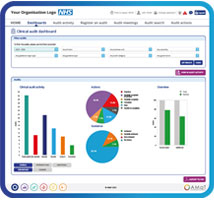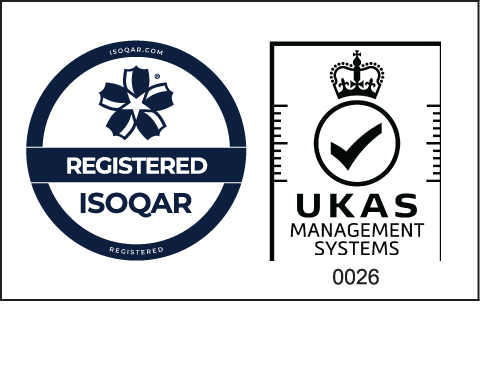Case studies by Meantime IT
All Meantime case studiesHow one health board in Wales is advancing care with evidence from AMaT

The client
AMaT - www.amat.co.ukSector
Health ServiceHealthcare professionals at Cwm Taf Morgannwg University Health Board are using cloud-based audit system AMaT to assure compliance with NICE guidance. NICE nurse scholar Natalie Morgan Thomas explains how nurses and clinical leads now have the evidence needed to push for resources and drive clinical improvement..
When Natalie Morgan Thomas became the first nurse scholar in Wales for the National Institute for Health and Care Excellence, she set out to deliver on her passion for enhancing the quality of care – specifically in relation to NICE compliance.
Natalie wanted to use her secondment as a NICE Scholar to help address this challenge at Cwm Taf Morgannwg University Health Board, where she is Deputy Head of Clinical Audit and the Lead Nurse for Clinical Effectiveness. With more than 21 years’ experience working across coronary care, medical admissions, health visiting, and safeguarding she felt strongly that healthcare professionals faced a significant challenge in remaining up-to-date with changes in practice.
“Changes in medicine and modern nursing are vast – there is something to be learned all the time,” she says. Her focus, therefore, was to demonstrate how a consistent culture of gathering and using evidence of compliance could enable remedial action to be planned, as appropriate.
Building evidence around compliance and gaps
Natalie began her work as a NICE scholar by assessing clinical audit processes in health boards across Wales.
“We would get a lot of anecdotal information,” she explains. "A clinician would say ‘yes, we are compliant’. There was no hard evidence to support that statement – but it was taken as gold.”
She was determined to deliver something more robust – given the need for effective adoption of NICE guidance on consistent quality care.
“I was keen to move to a model where we required the evidence that assures the compliance is in place, consistent, and auditable at any given time,” says Natalie. “The objective was to build an internal process and give detailed assurance to our medical director on our compliance with NICE guidelines.”
Producing this evidence of compliance was “a big culture change” for departments, she adds. But it was helped by the introduction of AMaT, a cloud-based audit platform, that she built a case to procure in early 2019.
Using AMaT helped deliver her strategic vision. Where once evidence was difficult to gather, the ‘culture change’ she wanted began to emerge. From having inconsistent audit data being collected through different methods on isolated spreadsheets and pieces of paper, the board gained a consolidated view of compliance across the organisation.
“The system is a game changer – it helps us to do this in a measurable and manageable way,” she says.
“Until we adopted AMaT we weren’t able to give a proper assurance position. Now people in departments are accountable for the capturing of evidence through a simple system.
“When you provide a report on paper you are already out of date. The system allows us to report live. This means senior leaders can go on to the system and get a current live position across the hospital and from community settings.
“That’s great for assurance. And it allows us to raise awareness of where things aren’t going so well to put measures in place to rectify the issues.”
Managing risk and empowering clinical leads with evidence for resource
The introduction of AMaT and the board’s understanding of NICE compliance is still relatively in its infancy. However, Natalie says there are already “definitely areas where I feel more reassured”.
There are areas of risk that have been presented to the board’s medical director which have been responded to. She says: “Where there is a gap, we now know the reasons – we measure and manage that risk.”
“The biggest thing we have identified is a need for resources,” Natalie explains. “Guidance might say ‘you need to review a patient within three weeks of a consultation’. That requires resources.
“We have been able to put bids in off the back of this work to make sure we get the necessary nursing teams in place, so that guidance targets can be met.”
Moving from anecdotal approaches is proving powerful for clinical improvement. “If you can demonstrate you are only 40% compliant because you need resources to do the other 60% then the medical director has to take that seriously to make sure patients get the quality of care recommended,” says Natalie.
For example, requests are now being fulfilled around specialist nursing for Parkinson’s clinics where additional resources were required. And the board is using new processes to look at priority compliance areas including for cerebral palsy.
“We weren’t even asking the questions three months ago about the experience of a patient with cerebral palsy coming through the door,” Natalie explains. “Now we are gathering hard evidence that we can produce for the medical director.”
“This is helping to ensure as a health board that we are cost effective, clinically effective and that we are providing the best opportunities and outcomes for patients. To ensure we are doing that requires us to be NICE compliant.”
Why AMaT?
Natalie explains the board chose AMaT as “no other system came close to our requirement”. When it came to configuring the system to her organisation’s needs, she says she “couldn’t have asked for more of a responsive and supporting team”.
“AMaT is simple to use – which is important for busy nurses and clinicians,” she says, adding that being able to collaborate with AMaT users in other NHS organisations has been valuable.
A Wales-wide approach?
Natalie is now keen to share experiences and benefits more widely in Wales, and insists that AMaT has already been a “massive part of the work we have shared” in a NICE Welsh network.
This has led to interest from other boards in procuring the system, and Natalie is eager to support that process. “We are looking at helping other health boards acquiring AMaT.”
She adds: “Wouldn’t it be wonderful if we could do that Wales-wide, and to give the Welsh Government access to assess boards independently? Hopefully one day we could benchmark each board against each guideline. If gaps are similar, we would be able to see national challenges. And we could take a national approach to reduce variation in practice and clinical outcomes.”
AMaT helps:
- Underpin quality improvement programmes from ward to board
- Prepare for and respond to Care Quality Commission inspection
- Provide a searchable, holistic view of organisation's quality activity
- Measure quality progress over time
- Ensure actions are recorded and monitors progress
- System driven prompts
- Empower staff to be a driving force in quality improvement
- Improve and manage compliance with NICE standards
- Support national and local audits, service evaluations, and regular assurance audits across wards and services
- Provide simple access to supporting documentation
- Reduce reliance on paper chasing for audit progress
- Reduce issues arising from version control of emailed word documents
- Save money by providing a flexible platform for improvement activity
- Save time by providing activity reports across multiple departments
Download the Cwm Taf Morgannwg University Health Board case study (pdf)
See how our bespoke software has helped our customers and learn how it can help you

